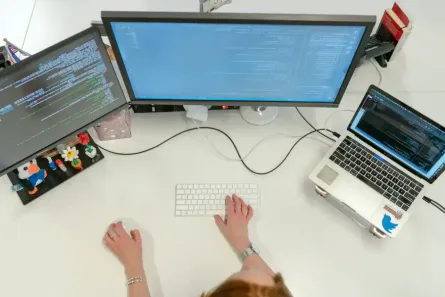Managing documentation at factory floor
- 11 Jun, 2020

Workers need documentation. A lot. That’s a fact. Problem is, keeping this documentation updated is way too time-consuming and a waste of papers. It’s not strange to walk around the factory floor and find plenty of outdated working instructions being used by the workers. This is an extremely critical situation as a huge percentage of customers’ claims have lack of documentation as the common root cause. All the trust and quality concerned one might have been building during many years could end up in the trash just by not using the right documentation.
In an ever-changing environment, as in the case of a factory, it is very likely that distribution of information is far more important than formatting, or even the content. Let me explain myself on that one: of course you it’s important to have standardized work instructions, with self-explanatory pictures (kind of Ikea ones) but this takes quite a lot of time, and then it becomes a resources problem. If you’re working in a big factory with plenty of people only dedicated to that task, good for you, you won’t have such problems. The point is, vast majority of factories don’t have those kind of resources, so operational-wise is more efficient to have some kind of quick & ugly napkin-type work instructions - but having them on time, for all the workers, on absolutely every station where the product is going to be manufactured - rather than having prettier ones but three days after the product is finished. I bet any production manager would prefer the ugly ones any day of the week.
Another big problem the factories face is tracking of which workers have which working instructions. Maybe Daniel was on holidays the week the instructions were released, or Peter was on sick leave. Next time those workers need to manufacture the product, in the best case scenario they will need to go to their team leaders and ask them for a new copy. Worst case scenario, they will manufacture as always and then the product won’t be standard. When I suffered this problem, I thought about creating an Excel file with all the names of workers, dates and instructions I physically handed them over. I did this for every single work instruction and every single worker. Of course this was an extremely time-consuming task and was screaming for some kind of automation.
This is where technology comes up. Since tablets prices have decreased quite a lot in the last few years, one possibility is having all this documentation centralized, controlled and updated in real-time for all the workers. When someone creates a work instruction, an alert comes up and everything is synced. Aren’t you based in the factory? Is your engineering team working from home, or living in another country? No problem, everything is digitally available at the touch of a button.

Many of the best work instructions are made in countries where people can’t neither read nor write, so work instructions are full of pictures, very visual and self-explanatory. Based on this premise, what about working with high definition videos? Life can’t get any easier than that…
Once you embrace the digital path, it’s important to make a plan for the critical working instructions. Which instructions should you start from? You might have plenty of them already. Custom-made projects usually require many changes during the manufacturing phase, and workers are more prone to check the instructions before starting the assembly. This might be a good starting point for these new digital documents.
Although it’s pretty straightforward in any documentation management program, it’s very important to have control on who is able to create the work instructions, and differentiate them from the ones who can only see or comment. The workflow must be defined beforehand and must be applied to the entire organization.
As with everything in life, the most important part is just start doing. Having everything in digital format will ease the manufacturing process, as well as reduce the errors at the factory floor. Distribution and availability is key in this case.


